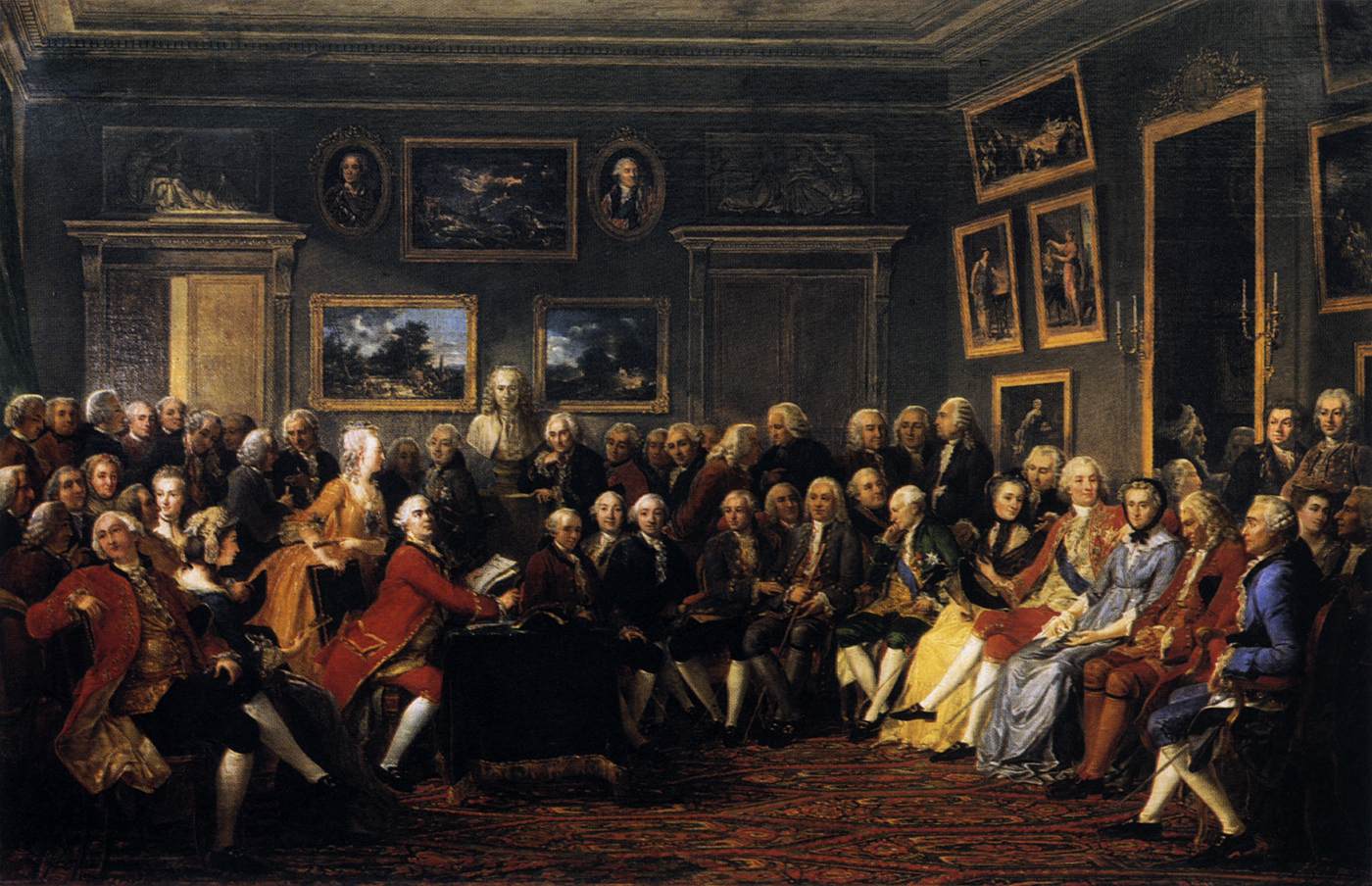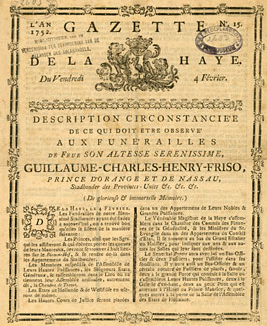Week 5: Eighteenth Century Society
Textbook reading: Birn, Chapter 7. This week we return to European society and examine changes in its structures that took shape during the eighteenth century. First, we study the formation of a “composite élite” that brought together aristocrats and bourgeois; next, we'll analyze a thesis about the formation of the “public sphere” in the eighteenth century and its consequences for political life. Read for discussion in class: Ulrich Bräker (1735-1798), The Life Story and Real Adventures of the Poor Man of Toggenburg (Excerpts, Part II) [Canvas]
Aristocratic Culture
I. Introduction: Hierarchy at the Opera
Text: Hierarchy at the Opera
Film Clip: Marie Antoinette (2006)Image: Jean-Martin Moreau, La petite loge (ca. 1770)
Film Clip: "Le Te Deum du Roi," Le Roi Danse (2000)
Image: Jean-Baptiste Lully (1632-1687)II. The Formation of a “Composite Élite”
A. European Nobility—A Survey
B. Bourgeois Wealth—Sources and AimsMap: Lands of the Radziwiłł Family
Image: Karol II Stanislaw Radziwill (1734-1790), voivod of Vilnius and starosta of Lwów
Image: Joseph Wenzel von Liechtenstein (1696-1772)
Image: John Churchill, Duke of Marlborough, by Godfrey Kneller (c. 1720)
Image: Blenheim palaceMap: London, ca. 1700
Map: London, ca. 1850III. Forms of Sociability: Academies and “Salons”
A. The Academies
1. The Precedent of Royal Academies
2. Proliferation and Transformation
B. Salon CultureMapping History: Academies in Early Modern Europe
Gisbert Cuper (1644-1716)
Image: Marie Anne de Vichy-Chamrond, marquise du Deffand (1697-1780)
Image: Anicet-Charles-Gabriel Lemonnier (1743-1824), In the Salon of Madame Geoffrin in 1755 (1812). Oil on canvas, 126 x 195 cm. Château du Malmaison, Rueil. Lemonnier's image depicts one of the most celebrated salons of eighteenth century Paris. The hostess, Madame Geoffrin, is seated in the front row, third from the right; assembled in her salon are several of the greatest intellectual luminaries of the day, including Diderot, Fontenelle, Montesquieu, and Marmontel. Madame Geoffrin herself personifies the composite élite in several respects: she was not of noble birth, and her wealth derived from her husband's success in manufacture. That a woman should function as host was also typical of eighteenth-century aristocratic sociability. Image source: Web Galery of Art.IV. The Invention of “High Culture”
Image: Christoph Willibald Gluck (1714-1787)
Image right: Thomas Gainsborough (1727-1788), The Blue Boy (1770). Oil on canvas. 70 x 48 in. (177.8 x 112.1 cm). The Huntington Art Collections. Image source: Artchive.

.jpg)
